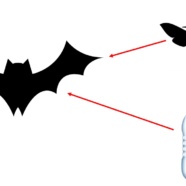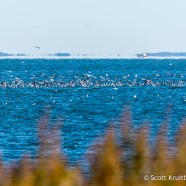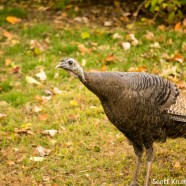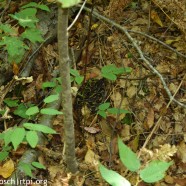RTPI Begins New Plastic Pollution Research Initiative
Plastics have been around in their current form for decades, and estimates suggest that more than 8 billion metric tons have been created since large-scale production of plastic started in the 1950s. The vast majority of plastic that has been created is still in existence today – resting in landfills or floating around the planet’s waterways as litter. Plastics do not biodegrade, they photodegrade. This means that they don’t readily break down into their constituent materials, they simply break down into smaller and smaller particles. This aspect of their chemistry is creating cause for...
Read MoreGull Feeding Frenzy
There have been enormous numbers of gulls feeding in Long Island Sound over the past few months with sizable numbers of bait fish and schools of other species to prey on. This is before today’s mega and historic weather-based Franklin’s Gull invasion of the Northeast! More on that later…but going back to this summer and early fall, the busy food web has even attracted several whales into the waters. Laughing Gulls, absent for much of the summer, have been seen in great abundance since late summer. Their activity, along with that of Ring-billed and Herring Gulls, brought in...
Read MoreWild Turkey: vicious predator
‘Tis now the season for the Wild Turkey (Meleagris gallopavo). I have been regularly spotting a couple of groups lately, one with around 18 individuals and another with around 8. Here is one bird passing through on a showery and cloudy afternoon. It is hard to believe how rapidly the species has expanded in many areas in the last couple of decades. Is their population increase partially responsible for a decrease in some woodlands herpetofauna? I posted a great deal about Timber Rattlesnakes (Crotalus horridus) this summer, and would you believe this very turkey is a potential...
Read MoreApex predator or small meal?
When looking at a “teenage” Timber Rattlesnake from above like this it seems rather insignificant and certainly unimposing. We know it is a venomous snake, which may add a bit of intimidation, but we should also know it is shy, passive and uninterested in harming a human unless it is being directly threatened. At this time of year there are much smaller Timber Rattlesnakes – some less than a foot long – in the form of neonates. These newly-born young have fangs and venom but a significant percentage will perish in their first year from a variety of threats. Twan...
Read More







